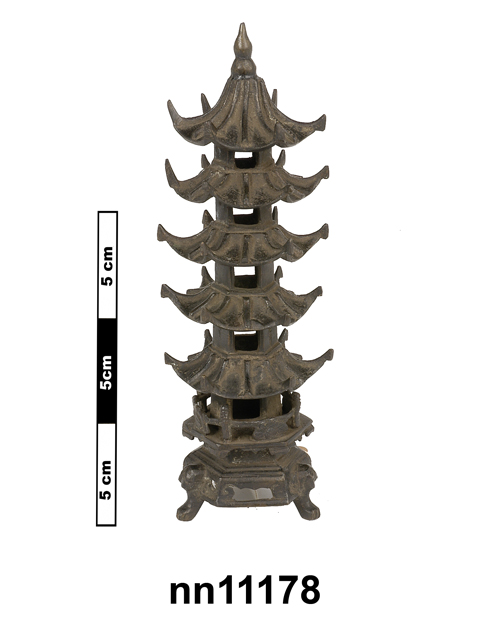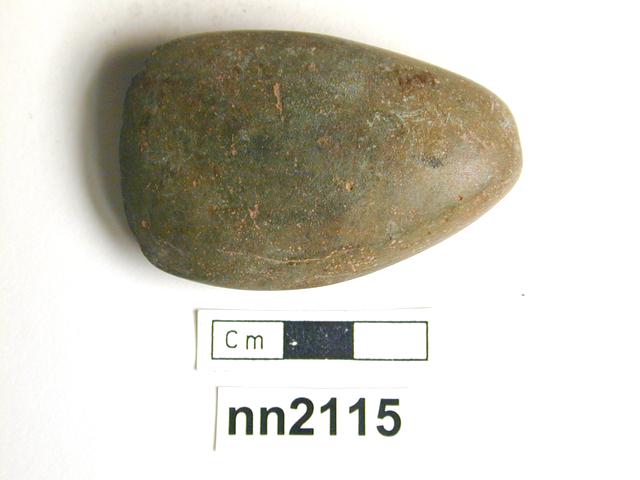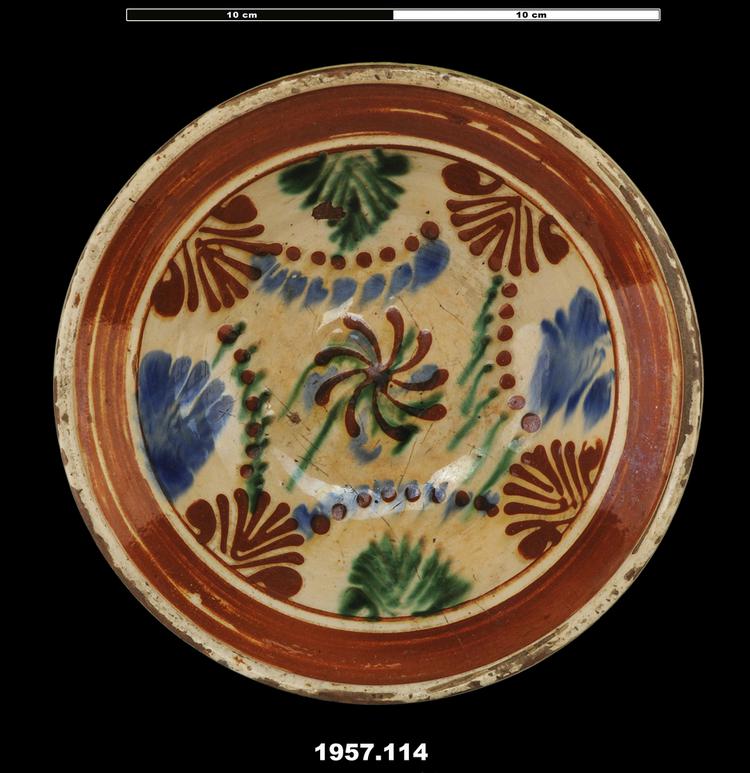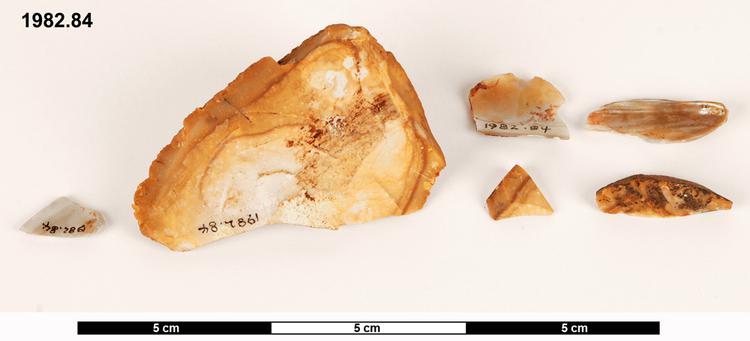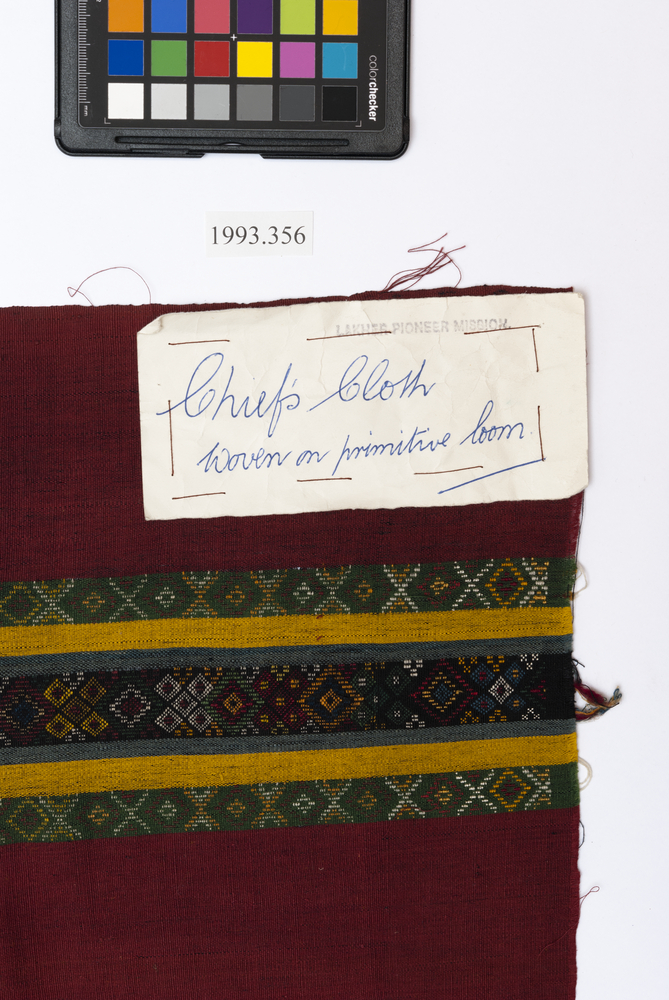
Chief’s cloth (male). Three broad red warp stripe-bands, interspersed and edged on one side by bands with narrower warp stripes of green, yellow, blue and black. The green and black warp bands decorated in continuous and discontinuous supplementary weft lozenge and cross `X’ shape patterns in red, white and yellow on green and red, yellow, blue and white on black. A fourth narrow red warp band near the edge decorated with warp zig-zag pattern in yellow and blue. At approximately one quarter of the length from each end, four bands of yellow supplementary weft close together, in zig-zag pattern. The cloth has two paper labels attached on the exterior or facing side. At one end a small label with a punched hole, sewn on with white thread, typed: `LAKHER PIONEER MISSION. Chief’s cloth, woven on primitive loom.’ At the other end, a larger label, sewn on with red thread, stamped at the top `LAKHER PIONEER MISSION’ and handwritten below: `Chief’s Cloth woven on primitive loom’.
Lakher is the name given to the people by outsiders: they are known to themselves as the Mara (see N.E.Parry 1932 The Lakhers London: Macmillan). For this type of cloth: See description of cheunapang cloth, red grounds, with red and yellow silk `worn by chiefs and well-to-do people’ - see N.E.Parry 1932 The Lakhers London: Macmillan p31. See illustration of `Man’s blanket, Mara’ in Fraser, D.W. & Fraser, B.G. 2005 Mantles of Merit: Chin textiles from Myanmar, India and Bangladesh Bangkok: River Books, p66-67. This collection associated with the Lakher Pioneer Mission set up by Rev R.A. Lorrain with his wife Maud in 1907. The mission was supported by Lorrain’s home church in Penge. The mission is now the Mara Independent Evangelical Church.



